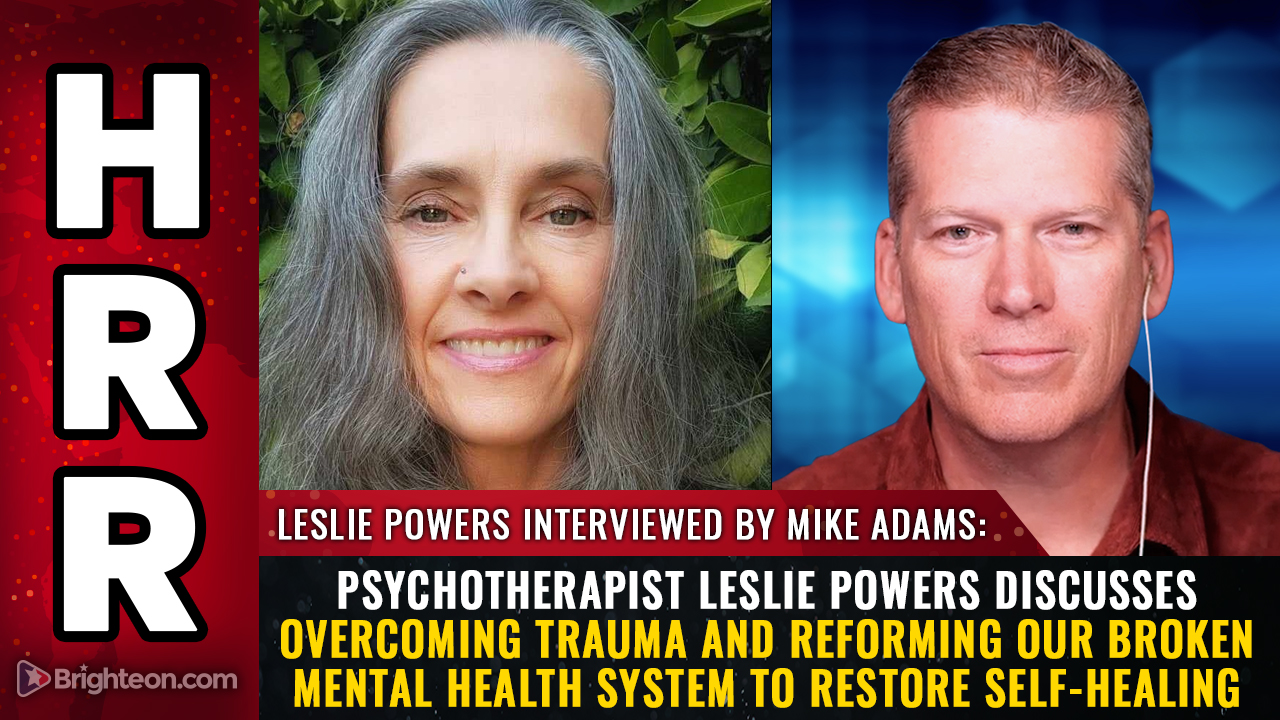 Parler
Parler Gab
Gab
- DMSO (dimethyl sulfoxide) is a versatile, low-cost solvent with remarkable medicinal properties, including pain relief, anti-inflammatory effects and drug delivery. Despite over 11,000 studies supporting its benefits, it remains largely sidelined in mainstream medicine due to its unpatentable, generic nature.
- Discovered in 1866, DMSO can penetrate skin, muscle and bone, delivering drugs systemically. Beyond transport, it reduces swelling, softens scar tissue, protects against radiation and may enhance cell repair. It has shown efficacy in conditions like arthritis, scleroderma and nerve pain.
- In the 1960s, Dr. Stanley W. Jacob discovered DMSO's medical potential after noticing its rapid absorption through skin. His clinical trials demonstrated dramatic improvements in burns, arthritis and other ailments, but his research faced suppression from pharmaceutical interests and regulatory hurdles.
- Despite widespread patient success, the FDA imposed stringent testing requirements, effectively blocking DMSO's approval for most uses. Public demand surged as patients and veterinarians used it off-label, but it remains FDA-approved only for interstitial cystitis (as Rimso-50).
- DMSO’s story highlights systemic barriers in medicine—where patentability and profit often outweigh efficacy. Its broad therapeutic potential remains underutilized, illustrating how non-patentable treatments struggle for recognition despite scientific merit.
A solvent with healing power
DMSO didn't begin in a pharmacy – it came from a pulp and paper mill. A colorless liquid with a garlic-like odor, its molecular structure gives it a rare ability. It can pass through skin, muscle and even bone, carrying other substances into the bloodstream. But DMSO turned out to be much more than a delivery vehicle. Researchers discovered it reduced swelling, eased pain, softened scar tissue, preserved organs, protected against radiation damage and improved circulation. It could transport insulin, antibiotics and anti-inflammatory drugs into deep tissues – without the need for injections. At higher doses, it could destroy proteins. In low doses, it activated enzymes that regulate vital functions in the body. Some researchers believed DMSO could strengthen cell membranes and trigger healing in cases where conventional treatments failed.DMSO's discovery and healing potential
The story begins in 1866 in Kazan, Russia, with Dr. Alexander M. Zaytsev, who first synthesized DMSO. This colorless, slightly viscous liquid with a faint sulfurous odor was found to have an extraordinary ability to dissolve a wide range of substances – both water-loving (hydrophilic), such as salts, some proteins and sugars, and fat-loving (lipophilic), such as lipids (fats), oils and certain drugs. Saytzeff noted its unique properties but DMSO remained largely "forgotten" for nearly a century. The modern medical story of DMSO began in 1961, when Dr. Stanley W. Jacob, a surgeon at the University of Oregon, met Robert J. Herschler, a chemist working with tree extracts. Herschler casually mentioned that DMSO could carry ink through bark. Intrigued, Jacob applied a few drops to his own skin – and within minutes, he could taste it in his mouth. That meant DMSO had traveled through his skin, into his bloodstream through and up to his mouth – an almost unheard of feat for a compound. From that moment, Jacob was hooked – not on the chemical but on its potential. He began testing DMSO on burns, sprains, pain syndromes and other disorders. A lab assistant with a chemical burn felt relief in minutes. An arthritic thumb regained mobility and movement. A young girl with crippling juvenile arthritis walked again after three years. Sinus sufferers reported drainage and relief from just a few drops. Athletes, accident victims and soldiers all showed faster healing, less inflammation and deeper relief. DMSO showed promise in patients with hard-to-treat conditions, including:- Dupuytren's contracture (a hand condition where fingers curl inward due to thickened tissue)
- Peyronie's disease (curved or painful erections caused by penile scar tissue)
- Rheumatoid arthritis and scleroderma (autoimmune conditions causing joint and tissue damage)
- Gout, neuralgia, sinusitis and varicose ulcers
Overwhelming positive results
By 1964, more than 4,000 patients in the U.S. and Europe had been treated with DMSO in clinical or research settings – with overwhelming positive results. Pain eased, inflammation dropped, stiffness melted away and wounds healed faster. But then came the media. The New York Times, Newsweek and U.S. News & World Report all ran glowing features. Suddenly, DMSO was a household name. That's when the U.S. Food and Drug Administration (FDA) and pharmaceutical companies stepped in – not with support but with suspicion. Still shaken and reeling by the thalidomide tragedy that caused birth defects in Europe, the FDA clamped down hard on any new drug with systemic effects, especially one getting so much buzz and attention. DMSO wasn't new. It wasn't patented. It cost about 35 cents a pint. It could not be monetized the way brand-name drugs could. The FDA tightened regulations and demanded extensive, expensive toxicity testing, beyond the reach of most academic labs. Companies like Merck and Syntex, once interested, dropped out. The FDA-required studies would cost over $10 million, effectively pricing out everyone but the biggest, wealthiest players. Jacob, meanwhile, became a target. His research grants vanished. He was labeled a "quack," barred from surgical societies and denied publication. When a journal finally accepted one of his articles, it ran with an unprecedented editorial apology. Still, Jacob never gave up. But the system made progress nearly impossibleThe smell of healing
Another barrier? The smell. Once absorbed, DMSO gave users a garlicky or oyster-like odor (on the breath and body). Athletes joked about it. Coaches complained. But patients? They didn't care. Backed by tens of thousands of case studies, DMSO demonstrated one of the broadest therapeutic profiles ever seen. Pain relief typically kicks in within 30 to 60 minutes and could last for hours. In trials and even real-world use, DMSO helped treat:- Acute injuries - back and neck pain, burns, sprains and strains
- Chronic inflammation - osteoarthritis, rheumatoid arthritis, scleroderma
- Fibrotic disorders - Dupuytren's contracture, Peyronie's disease
- Nerve pain - herpes zoster, trigeminal neuralgia (nerve disorder causing severe, electric shock-like facial pain)
- Sinus infections - through nasal application
- Skin conditions - acne, psoriasis
- Surgical recovery - abdominal and orthopedic surgery
- Vascular issues - ischemic ulcers, thrombophlebitis, varicose veins
Science versus system: A lesson in medical history
So why, despite decades of promising data, has DMSO never been fully embraced? As McGrady points out, it comes down to the collision between science, politics and profit. Drug approval isn't just about scientific evidence – it is about patents, investors and protecting existing markets. And DMSO broke every rule: It was old, cheap, off-patent and threatened entire drug classes. Scientists like Jacob weren't against the system – they were simple for the science. They didn't claim DMSO was a cure-all. They just wanted it studied properly. Instead, it was shelved – not for safety concerns but because it could not be controlled. Today, DMSO, sold as Rimso-50, remains FDA-approved only for interstitial cystitis. But it's widely used in veterinary care, alternative medicine and international clinics, with a loyal community of doctors and patients who have witnessed its power firsthand. DMSO's story is about more than a compound. It's about how we decide what counts as "real" medicine – and what happens when healing collides with the bottom line. This natural molecule reminds us that the best solutions aren't the most profitable – and that sometimes, the next medical breakthrough might just be hiding in plain sight. Watch an April 15, episode of Brighteon Broadcast News as Health Ranger Mike Adams talks about the astonishing true story of "forbidden cures" like DMSO, curative dyes and phycocyanins. This video is from the Health Ranger Report channel on Brighteon.com.More related stories:
DMSO: Nature's healing solvent with revolutionary potential – from cancer treatment to regenerative medicine. DMSO and natural dyes: A suppressed cancer treatment resurfaces in independent research. How science is unlocking the anticancer potential of DMSO. Sources include: Brighteon.ai Brighteon.comBy Lance D Johnson // Share
Trump administration reaffirms: Gender-related procedures are CHILD ABUSE
By Ramon Tomey // Share
Psychotherapist exposes how the mental health system fails patients and practitioners alike
By Finn Heartley // Share
Gates-funded “remote-controlled” birth control sparks debate over global contraception
By Willow Tohi // Share
Unveiling the power of a misunderstood antioxidant: “The Vitamin E Factor” by Andreas Papas
By Belle Carter // Share
Governments continue to obscure COVID-19 vaccine data amid rising concerns over excess deaths
By patricklewis // Share
Tech giant Microsoft backs EXTINCTION with its support of carbon capture programs
By ramontomeydw // Share
Germany to resume arms exports to Israel despite repeated ceasefire violations
By isabelle // Share










